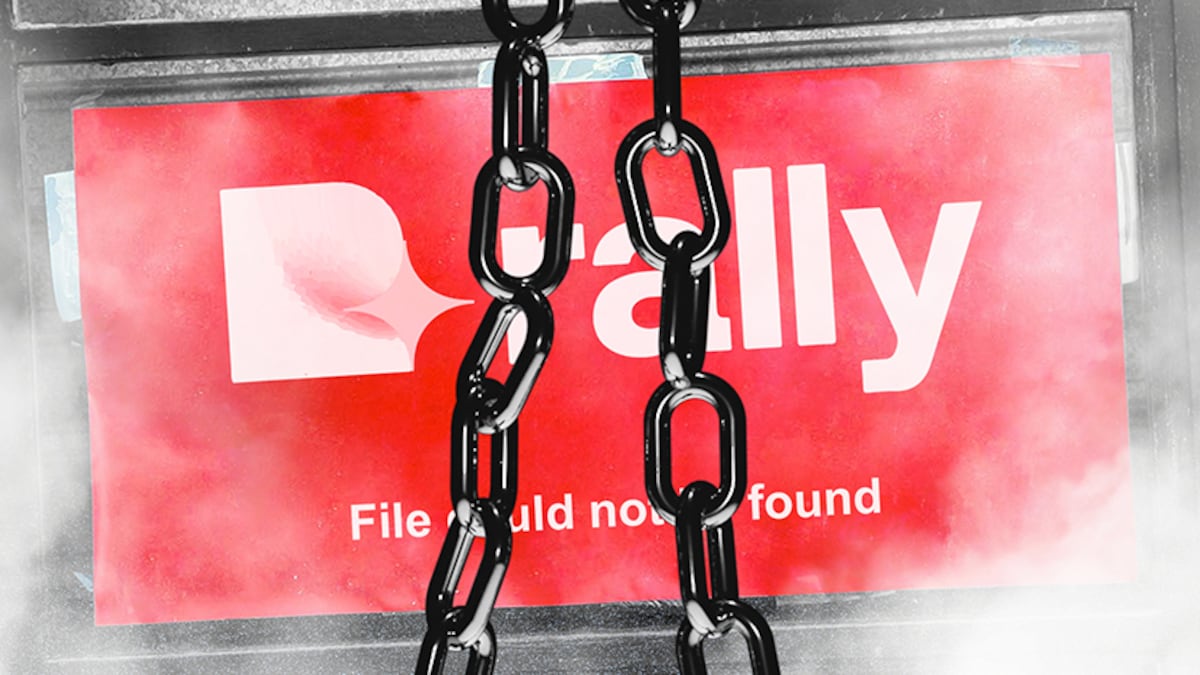Rally abruptly ceased operations this week, leaving investors and influencers in the lurch.
Launched in 2018, Rally was a blockchain project developed by the California-based company of the same name. Influencers, celebrities and artists could issue tokens – fungible or non-fungible – on Rally, which came with fan perks like exclusive access to music but were also often treated as investments or speculative trades.
An automated email sent by the company to DL News said Rally began to sunset on January 31 and “the site is no longer supported and you may experience a degradation in services, or it may simply become inoperable.” The email also said the NFTs on Rally will not be transferable to Ethereum and “these will not be accessible once the site shuts down.”
Rally attracted significant investment, raising $57 million in a 2021 funding round from venture capital firms such as Andreessen Horowitz and Coinbase Ventures. Despite never gaining popularity among crypto natives, it attracted retail investors who were swayed by celebrity and influencer endorsements.
“I never even tried to get a full understanding of the company itself because the creators who themselves had invested and put their names on these tokens were, and still are, people that I very much trusted,” investor Chris Strub told DL News. “I am not a crypto expert at all.” Strub said he had initially been turning a profit, but the platform’s downfall was rapid.
“Companies should only be using or creating ‘blockchains’ if they’re looking to decentralise that data.”
Although Rally billed itself as “a decentralised network that powers the vibrant and independent economies of blockchain with the Ethereum blockchain,” it was technically a sidechain controlled by the company that developed it. Sidechains are separate and typically centralised blockchains that connect with other blockchains through crypto bridges. They do not benefit from the security provisions of decentralised blockchains like Ethereum, which cannot be shut down by a central entity.
“Companies should only be using or creating ‘blockchains’ if they’re looking to decentralise that data,” Daniel Chong, a former security engineer for a project built on Rally, told DL News. “If not, they’re just making a worse, slower, and inefficient database.”
Chong said that while the closure of non-crypto tech companies is “easier to fathom” when there aren’t financial assets involved, “it can get dicey when dealing with assets you had thought were [...] decentralised.”
“The creators I followed took different [tacks]. Some more or less seemed to abandon their coins pretty quickly while others continued to stay the course,” said Strub. As a social media agency owner with a sizable following, he also applied to launch his own token last March but ultimately decided against it as he noticed the platform was struggling.
Regulatory issues also plagued token creators on Rally, as New York resident Peter Shankman, creator of $SHANK, struggled to cash out his earnings due to “a missing BitLicense,” he told DL News. Companies involved in crypto in New York must comply with the state’s regulatory paperwork called the BitLicense, which came into effect in 2015.
“They kept stalling every time I asked for an update. They kept providing fewer and fewer answers. Finally, they went radio silent,” Shankman said. “Absolutely the worst upper management I’ve ever dealt with in any company ever.”
“I was aware that they were going through challenges, but I didn’t expect them to shut down so suddenly and without any warning or options for creators and their communities,” musician Auggie Velarde told DL News.
He issued his token $AUG in late 2020. Some 97 people hold $AUG, representing $2,800. By holding $AUG, the token holders could benefit from perks like “early access to music, videos, release dates” and “exclusive Discord channel permissions.”
“Unfortunately, I’d now say I think it was doomed from the start.”
“In retrospect, I should have been more sceptical when Rally decided to shut down the Discord community where they actively supported creators and the community,” Velarde told DL News. “But I was focused on being a musician and creating art. It’s really disappointing.”
“We experienced a disruption to withdrawal services in August due to a lack of third-party support,” Rally CEO Rob Collier told Decrypt, which broke the news on Tuesday. “However, from November 1 until January 24, users have been able to withdraw all of their assets. We gave various notices to support Rally users in this regard.” Collier cited funding issues as the key reason for the closure.
Strub told DL News that Rally’s process for asset withdrawals was “complicated and unreliable, with hefty gas fees to see any part of your own money back.” Although he moved off some of his assets in early November, he still has “some kind of coins in some platform I don’t even know the name of anymore,” he said. “It reached a point of not being worth the trouble of trying to figure it out.”
He said he applauded Rally for trying, but “would never get involved with this kind of experiment ever again.”
“Unfortunately, I’d now say I think it was doomed from the start,” Strub said.
